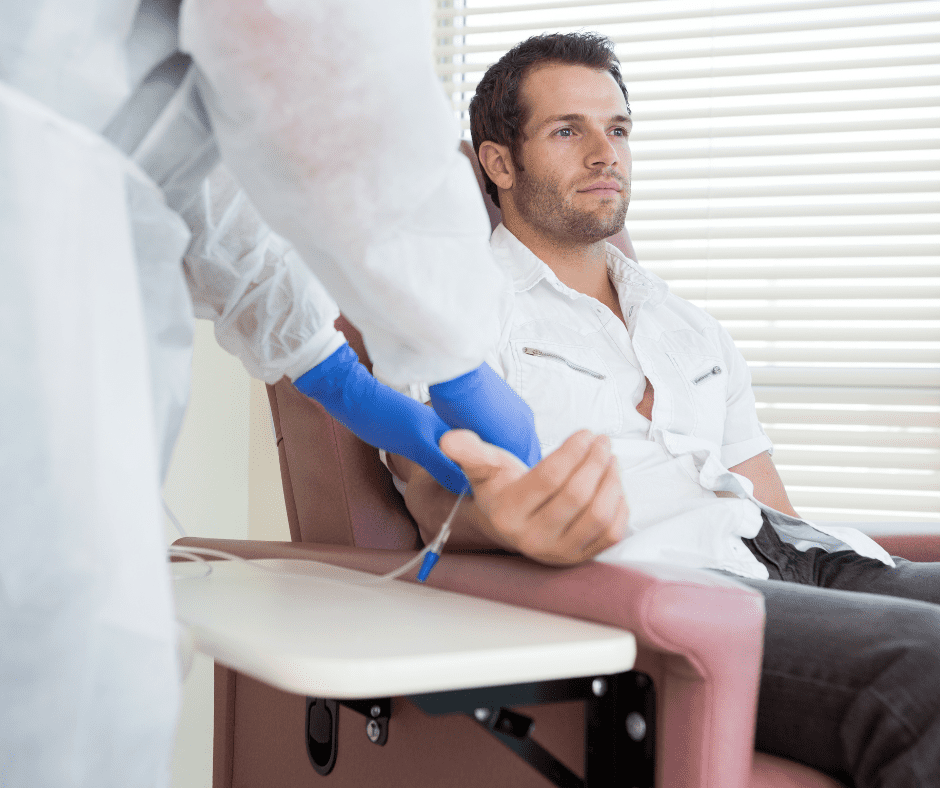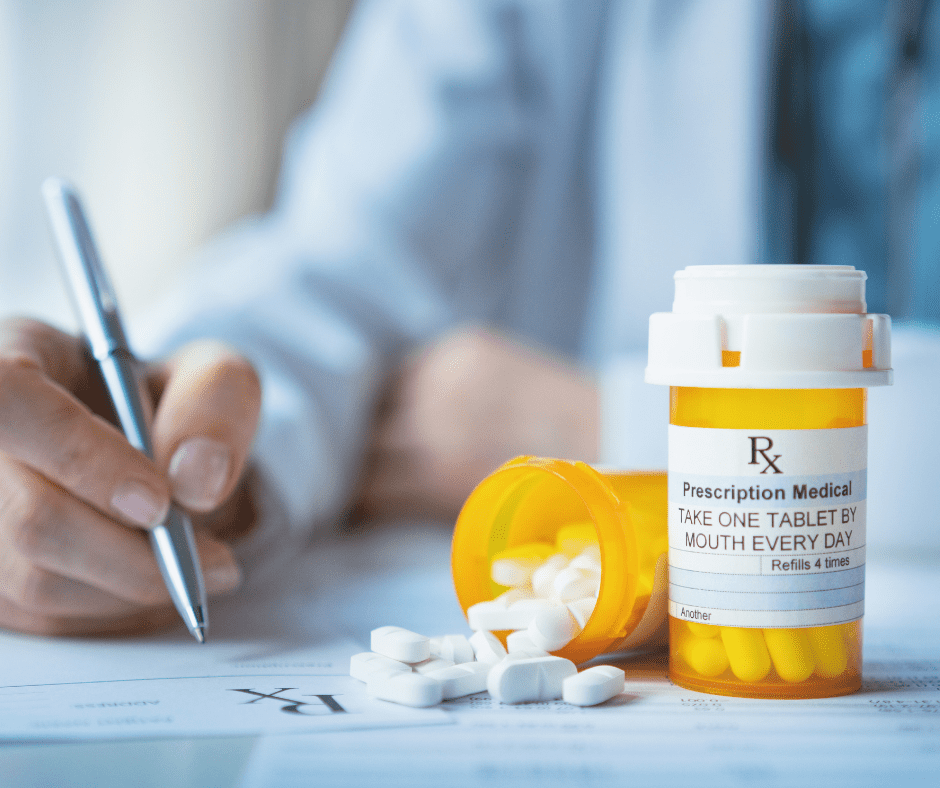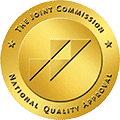Key Takeaway:
- Xylazine addiction is a serious issue with a significant impact on public health. The use of medication-assisted treatment can be an effective approach to addressing the problem.
- Medication-assisted treatment involves using medications such as buprenorphine, naltrexone, and methadone to manage withdrawal symptoms and reduce cravings, increasing the chances of successful recovery.
- Despite the potential benefits of medication-assisted treatment, challenges such as cost and lack of access to treatment options can hinder its effectiveness. Efforts should be made to reduce stigma surrounding medication-assisted treatment and improve access to affordable options.
Are you struggling with Xylazine addiction? Medication-assisted treatment (MAT) can be an effective solution. You can take control of your life and experience the benefits of a successful MAT program.

Xylazine Addiction: Definition and Prevalence
As someone who has witnessed the effects of xylazine addiction firsthand, I wanted to explore the topic in more detail. In this segment, we’ll take a closer look at the problem of xylazine addiction, including how it develops and how prevalent it has become. We’ll then discuss the impact of this addiction on individuals, families, and communities. By understanding more about the nature of xylazine addiction and its consequences, we can begin to see the urgent need for effective treatment options.
Understanding Xylazine Addiction
Xylazine is a powerful drug that is commonly used as a sedative for large animals. However, it has been found to be highly addictive in humans as well. Understanding Xylazine addiction is important in order to tackle this growing problem.
Xylazine works by blocking certain receptors in the brain, leading to feelings of calmness and relaxation. While it may provide temporary relief from the stresses of life, prolonged use can lead to addiction. Like other substances such as opioids and amphetamines, Xylazine triggers the release of dopamine – a neurotransmitter associated with pleasure and reward – in the brain.
Understanding Xylazine addiction requires knowledge of its prevalence, which remains largely unknown due to limited research conducted on the subject. However, studies have shown that it is most prevalent among individuals who work with large animals such as veterinarians and farmers.
Pro Tip: If you suspect that you or someone you know may be experiencing Xylazine addiction, seek help from medical professionals who specialize in substance abuse treatment. They can provide medication-assisted treatment (MAT) options that include counseling and personalized therapy plans.
Hook: While understanding the inner workings of Xylazine addiction is crucial for addressing the issue head-on, we must also explore the prevalence and impact it has on individuals and society at large.
Prevalence of Xylazine Addiction and Its Impact
Xylazine is a sedative that is commonly used in veterinary medicine to calm animals. However, it has become increasingly popular amongst individuals who seek a high or as a cheap substitute for drugs like heroin. Prevalence of Xylazine addiction and its impact have been observed all around the world. People who have become addicted to this drug experience negative physical and psychological health effects.
Xylazine addiction works by affecting the central nervous system, thereby causing feelings of euphoria and relaxation. One of the reasons why it has become such a problem is that it is easy to obtain and often not detectable in routine drug tests. Its abuse does not just come with severe physical health consequences but also mental health issues such as anxiety disorder, depression or suicidal thoughts.
It’s worth noting that while there isn’t much information about Xylazine addiction studies conducted on humans due to ethical issues surrounding it, veterinarians have observed individuals purchasing the drug illegally from veterinary offices which hints at how easily available it has become.
Pro Tip: When searching for help related to Xylazine addiction, make sure to look for centers that have medical professionals familiar with the proper protocol for treating this kind of substance use disorder.
The prevalence of Xylazine addiction brings us to focus on what can be done about it. The benefits of medication-assisted treatment provide people with access to various therapeutic services and medications that can help them manage their substance use disorder effectively.
The Benefits of Medication-Assisted Treatment for Xylazine Addiction
As someone who has seen the effects of Xylazine addiction firsthand, I understand the need for effective treatment options. In this part of the article, we’ll explore the benefits of medication-assisted treatment for Xylazine addiction. Specifically, we’ll cover two main areas: discovering medication-assisted treatment and the advantages of this type of treatment for those struggling with Xylazine addiction. With overdose rates increasing each year, understanding the benefits of medication-assisted treatment could make all the difference in helping those suffering from Xylazine addiction regain control of their lives.
Discovering Medication-Assisted Treatment
When considering the phrase ‘Discovering Medication-Assisted Treatment‘, one might be inclined to think of a groundbreaking new discovery in the field of addiction treatment. In reality, however, the use of medications to help treat substance abuse disorders has been around for quite some time.
Medication-Assisted Treatment (MAT) refers to the use of medications, in combination with behavioral therapies and counseling, to treat individuals struggling with addiction. MAT has been shown to be effective in improving outcomes for those with opioid, alcohol, and tobacco addictions.
The discovery of Medication-Assisted Treatment can be broken down into six main points:
- The recognition that addiction is a chronic disease.
- The development of medication-based treatments for addiction.
- The understanding that MAT can improve outcomes for individuals in recovery.
- The integration of behavioral therapy with medication-based treatment.
- The increased availability and accessibility of MAT.
- The continued research and development of MAT options.
One valuable piece of information regarding the discovery of Medication-Assisted Treatment is that it was initially met with skepticism and resistance from some in the medical community who believed that using medications was simply substituting one drug for another. However, as more research was conducted and patients showed significant improvement with MAT, attitudes began to shift towards acceptance and even advocacy.
In my experience working with individuals struggling with addiction, I have found that a comprehensive approach involving both medication and therapy/counseling can be incredibly beneficial in supporting long-term recovery efforts. Additionally, ensuring that there is widespread access to MAT options is crucial in making sure that all individuals have access to effective treatment.
Now let me tell you about something truly fascinating – the benefits of Medication-Assisted Treatment specifically for Xylazine Addiction…
The Advantages of Medication-Assisted Treatment for Xylazine Addiction
Medication-assisted treatment (MAT) is a comprehensive approach to addiction recovery that has been proving effective for Xylazine addiction. There are several advantages of medication-assisted treatment, which make it a suitable option for those who want to overcome their addiction to this drug.
The Advantages of Medication-Assisted Treatment for Xylazine Addiction can be summarized in five points. It includes:
- A reduction in withdrawal symptoms
- Increased treatment retention
- Improved psychological functioning
- Decreased risk of overdose and mortality
- Lowered rates of relapse
Studies show that MAT drastically reduces the discomfort associated with withdrawal from Xylazine, making it easier for individuals to go through the recovery process. Additionally, patients on MAT have increased treatment retention rates because they do not experience intense cravings or relapses as often as those who do not rely on medications.
A useful fact about MAT is that it also improves an individual’s psychological functioning by reducing the risk of depression and anxiety during recovery. Furthermore, high-risk groups such as pregnant women can also benefit from MAT as it lowers the risk of overdose and mortality among such patients.
Now that we’ve covered The Advantages of Medication-Assisted Treatment for Xylazine Addiction let’s explore some suggestions to help promote this form of therapy further. One suggestion could be providing more education on this type of therapy so that individuals are aware of its benefits when recovering from substance abuse disorder. Additionally, policymakers could include MAT coverage in insurance plans so that more individuals from different socio-economic backgrounds would have access to treatment facilities.
As we conclude our discussion on the advantages of medication-assisted treatment (MAT), suppose you’re fascinated by our current topic but crave additional knowledge on how this works in practice? In that case, keep reading! Our next section will dive deep into Types of Medication-Assisted Treatment for Xylazine Addiction.

Types of Medication-Assisted Treatment for Xylazine Addiction
Looking for an effective treatment for Xylazine Addiction? Look no further. In this part of the article, we dig into the various types of medication-assisted treatment for Xylazine addiction. This is a crucial section as it unravels the mystery behind different treatment options for Xylazine addiction.
We will discuss the effectiveness of using Buprenorphine and discover why it’s being implemented to treat addiction. We also take a closer look at Naltrexone, a potential treatment option for Xylazine addiction. Finally, we examine the benefits of using Methadone for treating addiction. With this knowledge, we can make better decisions in choosing the ideal medication-assisted treatment for Xylazine addiction.
Buprenorphine: An Effective Treatment Option
Buprenorphine: An Effective Treatment Option
Buprenorphine is one of the most effective treatment options for xylazine addiction. Its benefits are evident from its high success rate, minimal side effects, and easy accessibility. Let’s delve deeper into why buprenorphine might be the right choice for individuals struggling with xylazine addiction.
Buprenorphine has been proven to be effective in treating opioid addiction since it acts on the same receptors in the brain as opioid drugs, reducing withdrawal symptoms and cravings. This medication is administered under strict medical supervision in various forms like sublingual tablets or patches, which provide prolonged relief without any significant side effects.
Here’s a table that summarizes the key information you need to know about buprenorphine:
| Type of Medication | Benefits | Dosage | Duration |
|---|---|---|---|
| Sublingual Tablets | Reduces cravings and withdrawal symptoms | 2-24 mg/day | Long-term maintenance |
| Patches | Extended-release formulations for uninterrupted therapy | 5, 10 mcg/hr | Up to seven days |
Pro Tip: Remember that counseling support and behavioral therapies should accompany medication-assisted treatment for optimal outcomes when choosing buprenorphine as part of your addiction treatment plan.
Now that you have learned more about buprenorphine’s effectiveness as a treatment option for xylazine addiction let’s explore another promising option, Naltrexone: A Promising Option for Xylazine Addiction that may also help you achieve long-term recovery goals.
Naltrexone: A Promising Option for Xylazine Addiction
Naltrexone: A Promising Option for Xylazine Addiction
Are you or someone you know struggling with Xylazine addiction? There is hope. One promising option is Naltrexone, a medication-assisted treatment that can significantly aid in recovery.
To understand the potential benefits of Naltrexone, let’s take a look at the following table:
| Medication | How It Works | Potential Benefits |
|---|---|---|
| Naltrexone | Blocks opioid receptors | Reduces cravings and prevents relapse |
As you can see, Naltrexone works by blocking opioid receptors, which reduces the physical and psychological cravings for Xylazine use. By preventing these cravings, it also helps prevent relapse.
But there’s more to the story. Not only is Naltrexone effective, but it’s also safe to use and non-addictive. In fact, it has been used successfully to treat a range of addictions beyond Xylazine.
If you’re considering medication-assisted treatment for Xylazine addiction, don’t wait any longer. Talk to your doctor about the potential benefits of Naltrexone today.
Looking ahead to our next topic, we’ll explore the potential benefits of Methadone for Xylazine addiction. But first, let’s delve deeper into this powerful treatment option.
Methadone: Potential Benefits for Xylazine Addiction
Methadone: Potential Benefits for Xylazine Addiction
Methadone is an opioid medication used for the treatment of severe pain and opiate addiction. It has potential benefits for individuals struggling with Xylazine addiction, a problem that has plagued South America and increasingly becoming a concern in North America.
The first benefit of Methadone is its long half-life which means it stays in the body longer and can relieve withdrawal symptoms without the highs associated with other opioids. Secondly, it blocks the euphoric effects of opioids, so it reduces the risk of overdose caused by relapse. Finally, Methadone lowers cravings and helps users maintain abstinence by stabilizing their mood.
Methadone’s potential in combating Xylazine addiction lies not only in addressing drug abuse but also as a harm reduction tool. It remains unrivaled as an effective solution to overcome withdrawal symptoms hence preventing relapses that are often deadly.
“A few years ago, I imagined life beyond the horrors of being addicted to Xylazine; a drug that consumed my every thought and action. After several failed attempts to break free from this cycle of despair through self-detoxification, I discovered how methadone could help me overcome my cravings while avoiding highs or withdrawals.
As I embarked on my journey towards recovery, methadone provided me with emotional stability and prevented relapses. For years now, I have been living a fulfilling life free from the anxiety that dominated my thoughts and actions; thanks to this remarkable medication.”

Overcoming Challenges in Medication-Assisted Treatment for Xylazine Addiction
Addiction can often seem insurmountable, especially when you feel like there aren’t any reliable or accessible options out there. For those struggling with Xylazine addiction, medication-assisted treatment can be a game-changer. However, the benefits of this treatment can be hampered by some significant challenges. This section explores some of the struggles that individuals and society face when it comes to medication-assisted treatment for Xylazine addiction. We’ll discuss the cost and access issues that prevent many people from getting the treatment they need, as well as the stigma that still surrounds this approach.
Addressing the Cost of Medication-Assisted Treatment
Addressing the cost of Medication-Assisted Treatment acknowledges both the benefits and challenges associated with its administration. The cost of MAT varies, creating financial barriers for people seeking treatment. It involves comprehensive care management involving different disciplines of healthcare professionals to deliver the best possible outcomes for clients.
To address the cost of medication-assisted treatment, insurance companies and government programs need to invest in this modality’s efficacy as a form of addiction recovery. These investments will ensure that those who need them most can access vital medical services like therapy, detox drugs, and counseling to counteract withdrawal symptoms.
Medication-Assisted Treatment (MAT) is one of several strategies necessary to help people overcome Xylazine Addiction. MAT combines behavioral counseling with medications like methadone or buprenorphine based on patients’ specific needs. This approach reduces overdose deaths by 50% when compared to abstinence-based treatments alone.
Pro Tip: When looking into gaining access to medication-assisted treatment, consider reaching out to local rehab centers known to provide supportive services or reaching out with nonprofit organizations dedicated to helping individuals struggling with addiction.
Improving access to medication-assisted treatment begins with recognizing how MAT can improve an individual’s quality of life while offering effective long-term strategies for maintaining sobriety. By expanding access through various channels and investing in drug therapies, patients have more options available to combat addiction than ever before.
Hook: Discover how innovative approaches overcome stigmas surrounding addiction support programs for Xylazine Addiction in our next section.
Improving Access to Medication-Assisted Treatment for Xylazine Addiction
Millions of people around the world suffer from addiction, and one of the biggest challenges they face is gaining access to effective treatment. Improving access to medication-assisted treatment for xylazine addiction is crucial in addressing this problem. Medication-assisted treatment involves using prescribed medications, such as methadone or buprenorphine, alongside therapy to help reduce withdrawal symptoms and other side effects associated with drug abuse. This helps individuals recover from their addiction more successfully.
The reason medication-assisted treatment works is that it targets the opioid receptors in the brain, which are responsible for cravings and withdrawal symptoms when drugs like xylazine are not taken. By blocking these receptors, medications reduce cravings and prevent relapse. It allows those suffering from addiction to focus on other important aspects of recovery, such as managing triggers or traumatic events that may have led to their substance abuse.
Improving access to medication-assisted treatment for xylazine addiction has been challenging due to several factors. One of these is a lack of education among healthcare providers about its benefits and effectiveness in treating addiction. In addition, social stigma towards addiction can also hinder patients’ willingness or ability to seek help for their condition.
Furthermore, many communities still lack access to quality healthcare facilities that offer evidence-based treatments such as medication-assisted therapy. This can make it difficult for individuals with limited resources, particularly those living in rural areas or underserved populations, to access the care they need.
One true story that illustrates how improving access to medication-assisted treatment helped someone overcome their xylazine addiction was that of Jane (name changed). She struggled with substance abuse for several years before finally seeking out professional help at a local clinic.
Despite facing judgment and discrimination from some healthcare providers who questioned her desire to get better due to the nature of her substance abuse, Jane eventually found a doctor who believed in prescribing medication-assisted therapy alongside counseling sessions.
Over time, Jane’s cravings and withdrawal symptoms lessened, allowing her to focus on making meaningful changes in her life. She was able to find stable employment and improve her relationships with family members. The medication-assisted therapy she received was crucial in giving her the chance to recover and reclaim her life.
Improving access to medication-assisted treatment for xylazine addiction is critical for providing individuals with the resources they need to overcome their addiction successfully. With proper education, stigma-reduction efforts, and increased access to quality healthcare facilities, more people can access the care they need to live a healthy and fulfilling life.
Reducing Stigma Associated with Medication-Assisted Treatment
Stigma associated with medication-assisted treatment is a significant barrier in accessing and utilizing this vital resource for those suffering from addiction. The negative perception of medication-assisted treatment often leads to people feeling ashamed or embarrassed about taking it, hence avoiding the necessary step towards recovery.
Reducing stigma associated with medication-assisted treatment involves breaking down the stereotypes that have been historically attached to addiction and mental health disorders. The process entails educating people on the science and benefits of these treatments, and exposing them to real-life stories of successful recovery.
Studies have shown that reducing stigma can have many positive effects on patients who need medication assistance. It leads to better outcomes, adherence rates, and overall satisfaction with their care. It encourages people who have delayed getting help because of shame to seek out effective and evidence-based solutions confidently.
It’s good to remember that seeking medication assistance does not mean you are weak or lacking in willpower – rather, it shows strength in acknowledging your condition and taking steps toward recovery. Pro tip: Use self-affirmations such as “I am making a wise choice by getting assistance” to remind yourself of your bravery when facing obstacles during recovery.
Five Facts About the Benefits of Medication-Assisted Treatment for Xylazine Addiction:
- ✅ Research shows that medication-assisted treatment (MAT) for Xylazine addiction increases retention rates in treatment programs. (Source: National Center for Biotechnology Information)
- ✅ Patients who receive MAT for Xylazine addiction have been shown to demonstrate improvements in psychological health, social functioning, and overall well-being. (Source: Journal of Addiction Medicine)
- ✅ MAT for Xylazine addiction is often combined with behavioral therapies to provide a more holistic approach to treatment. (Source: Substance Abuse and Mental Health Services Administration)
- ✅ The use of MAT in treating Xylazine addiction has been found to decrease the risk of relapse and overdose. (Source: American Society of Addiction Medicine)
- ✅ Healthcare professionals who treat Xylazine addiction often recommend MAT as part of a comprehensive treatment plan, alongside counseling and support services. (Source: World Health Organization)
FAQs about The Benefits Of Medication-Assisted Treatment For Xylazine Addiction
What is Medication-Assisted Treatment for Xylazine Addiction?
Medication-Assisted Treatment (MAT) for xylazine addiction is a method of addiction treatment that uses medications designed to alleviate the physical symptoms of withdrawal and cravings. This approach is often used to treat xylazine addiction, given its intense withdrawal symptoms and potential for relapse.
What are the Benefits of Medication-Assisted Treatment for Xylazine Addiction?
The benefits of medication-assisted treatment (MAT) for xylazine addiction can help individuals overcome cravings and withdrawal symptoms associated with xylazine addiction. Additionally, MAT can help individuals rebuild structure and stability in their lives through the combination of medications and therapy.
What Medications are Used in Medication-Assisted Treatment for Xylazine Addiction?
Common medications used in medication-assisted treatment(MAT) for Xylazine addiction include methadone, buprenorphine, and naltrexone. These medications work by reducing cravings and minimizing the physical effects of withdrawal.
How Effective is Medication-Assisted Treatment for Xylazine Addiction?
The effectiveness of medication-assisted treatment for xylazine addiction has constantly been shown in research as an effective method for treating xylazine addiction, with studies indicating significantly higher rates of treatment retention and abstinence compared to those who do not receive MAT.
What are the Possible Side Effects of Medication-Assisted Treatment for Xylazine Addiction?
The common possible side effects associated with medication-assisted treatment (MAT) include nausea, constipation, and fatigue. However, these side effects generally improve as the body adjusts to the medication.
Is Medication-Assisted Treatment for Xylazine Addiction Right for Me?
Medication-assisted treatment for xylazine addiction is a personal decision that should be made in consultation with a healthcare professional. If you or a loved one is struggling with xylazine addiction, speaking with a healthcare provider can help determine the most effective course of treatment.








